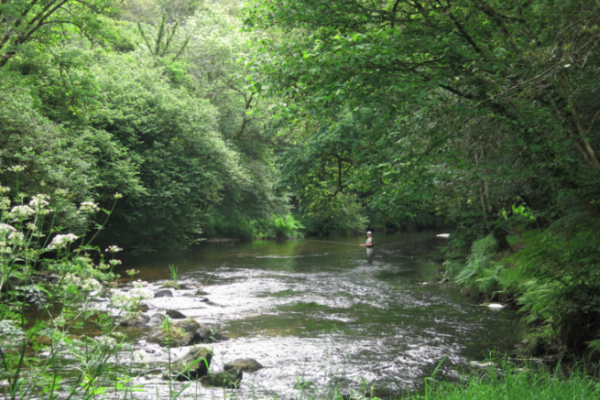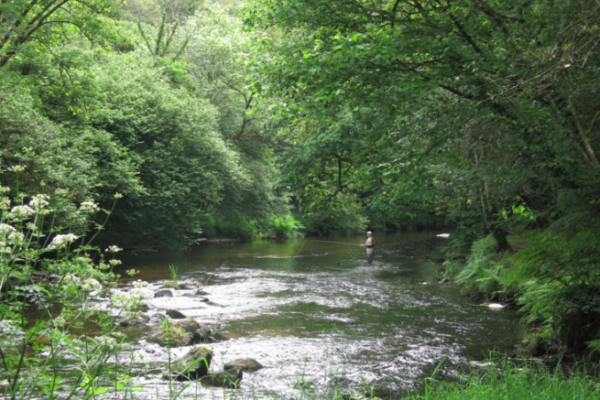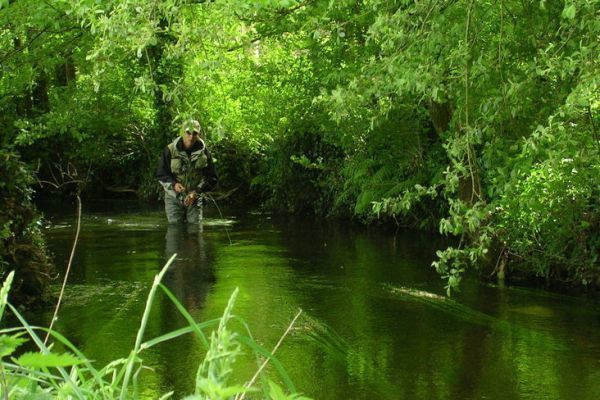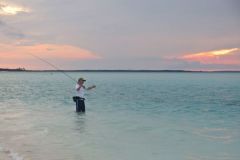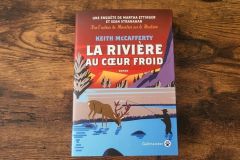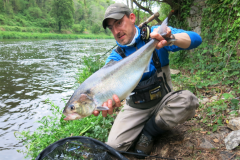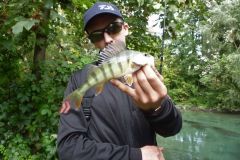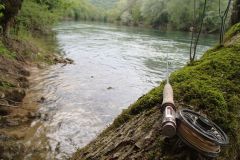The backhand throw, a throw similar to the straight throw
The backhand throw is in fact a straight throw with a slight incline, as the rod moves in front of the shoulder opposite your leading hand. So in front of the left shoulder for a right-hander and vice versa. The movement itself remains identical, with the same forward and backward blocking (11 h / 13 h) and the same impulse and gradual acceleration to the blocking point. It's not as complicated as all that, but you'll need to maintain a linear front-to-back movement and keep your wrist in line with your forearm, which will have a more important role to play in giving energy to the throw.
It should be taught or learned at the same time as the straight cast, so that it can be used whenever the situation calls for it. The main difficulty is to have the rod in front of the chest and to maintain a linear movement for good energy transmission, but with a little practice, this throw can be learned quite quickly.
Be careful, however, not to bring the rod back in front of the shoulder of your guiding hand, which would imply a transverse, non-linear movement and therefore poor line and leader development due to failure to maintain the casting axis.
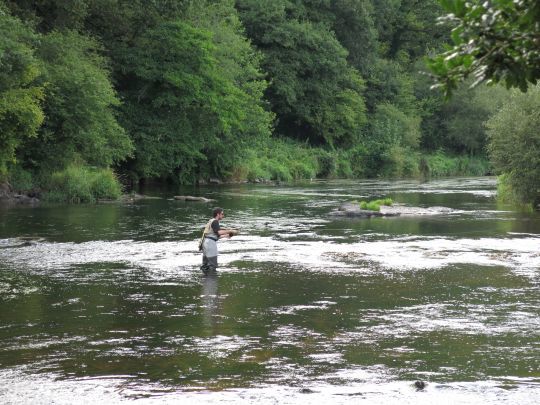
The backhand throw, a must
The backhand throw is used mainly for two reasons:
- Obstacles in the river or post that prevent forehand casting. This is often the case if you're going up a river on its left bank and you're right-handed, and vice versa if you're left-handed.
- Because of the wind, which can blow the silk and leader against the rod (side wind).
Once mastered, it's possible to fish on both banks, regardless of the wind. It's a must-have cast for any fly fisherman who regularly fishes small and medium-sized rivers, and even large rivers in some places.
The backhand can be executed from different angles, even horizontally (flush with the water), to avoid branches or other obstacles that would hinder the development of the line and leader to reach a gobage or position.
In addition to the straight cast, the backhand provides additional fishing comfort and saves us from having to cross the river (when possible) to cast on the forehand whenever the situation calls for it.
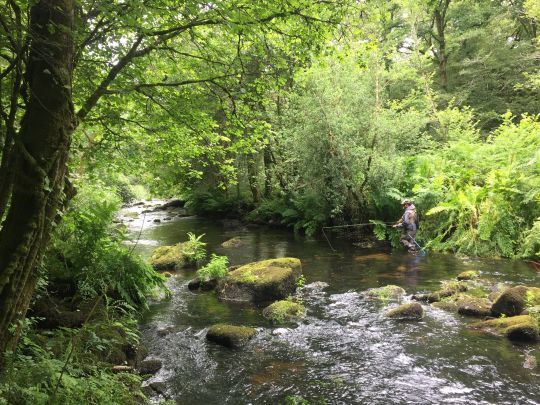
Other casts to learn to become a complete angler
To be an all-round angler who can adapt and cast in all situations, you also need to acquire the rolled cast, another essential casting technique for our hobby. It allows you to cast when you have little or no room behind you and cannot unroll your line in the air. A very practical casting technique in many situations, particularly but not only in small and medium-sized rivers.
A forthcoming video will introduce you to this cast, which, like all casts, requires a little practice, but allows you to make the most of certain situations and go and find fish where others may not be able to land their flies.
The roll can also be more dynamic and allow you to reach longer distances when you perfect this technique. Particularly useful for lake fishing, when there's little room to whip.
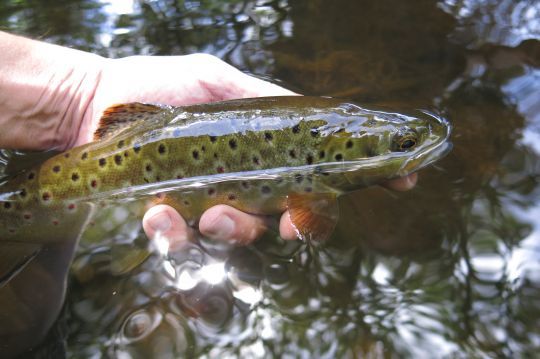
For big river fishing, but also and above all for lake or sea fishing, or for searching for predators, it's a good idea to learn other casting techniques to gain distance and cast in strong or misdirected winds, or to cast large flies.
Tractions are added to the front and/or back cast to increase speed and load the rod. These are the single and double pulls, which, once acquired, enable you to gain many metres in distance, but also to pass into the wind. An upcoming video on this subject will also be available on the Orion Fly Fishing You Tube channel.
Don't hesitate to subscribe to the channel for new casting tutorials and fishing videos.
